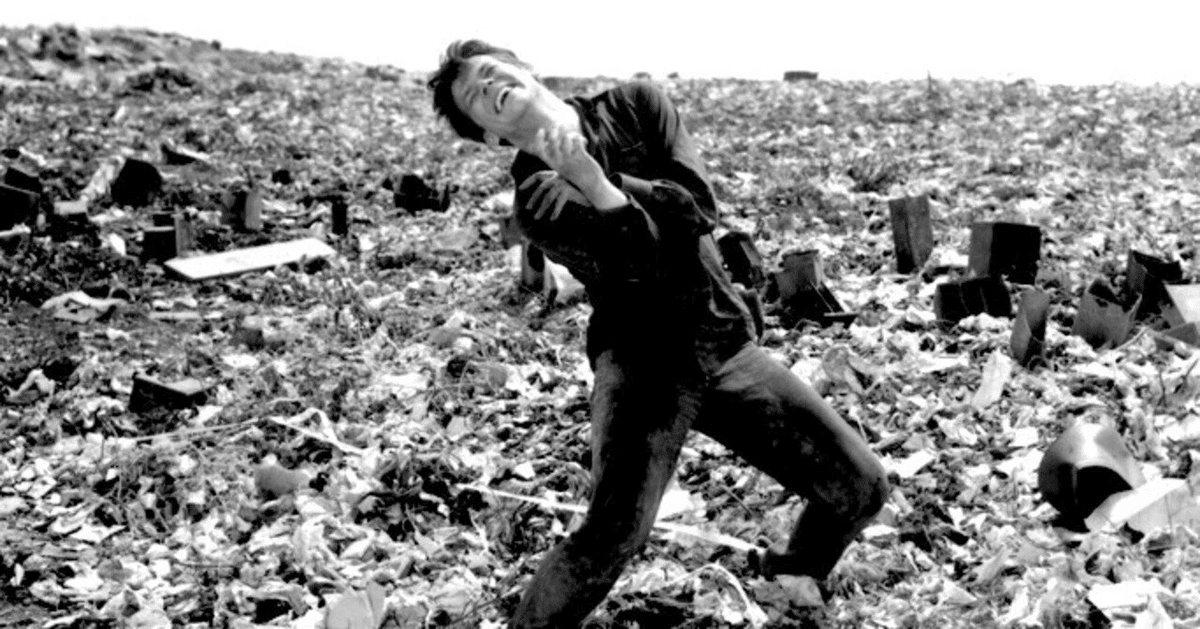
A Film to See the World/ 『Ashes and Diamonds』
At the end of last month, I visited the Prince Charles Cinema, often hailed as the "best cinema in London." I've wanted to go there ever since I arrived in the UK, but for a while, I was as busy as Haruko Sugimura in the Noriko Trilogy, so I hadn't been able to make it happen.
Then, I found out that a film very meaningful to me was being screened—Andrzej Wajda's 1958 film, "Ashes and Diamonds."
Ever since the day I first borrowed the DVD of this film from my university library, I’ve been deeply affected by the image of Zbigniew Cybulski, writhing in pain yet somehow smiling as he gazes up at the sky from atop a garbage heap. "Ashes and Diamonds" is a film that I recall in some moments of everyday life, and it has a special place in my heart. So, I couldn’t let this opportunity pass me by, and I took the day off work to attend the screening.

By the way, here's the screening schedule for the day:
12:30 – Pulp Fiction (Quentin Tarantino, 1994)
12:45 – Taipei Story (Edward Yang, 1985)
15:20 – Werckmeister Harmonies (Béla Tarr, 2000)
15:45 – In the Mood for Love (Wong Kar-wai, 2000)
18:05 – Ashes and Diamonds (Andrzej Wajda, 1958)
And so on.
As expected from the best cinema in London—what an incredibly strong and dazzling lineup. It’s like a cinematic electric parade. Almost blinding.
So, this time, I’d like to write about "Ashes and Diamonds," a film that always breathes somewhere within my heart, and the one that pulled me back into the cinema after such a long busy days.
"Ashes and Diamonds" is a Polish film directed by Andrzej Wajda, released in 1958. It is set on May 8, 1945, the day Germany surrendered in WW II, and tells the story of a young man named Maciek, who has been tasked with assassinating a labor party member over the course of one day.
Zbigniew Cybulski’s portrayal of Maciek writhing to his death atop a garbage heap is one of the most iconic scenes, frequently cited in stills, and I, too, was utterly shaken by this final moment.

Wajda's “War Trilogy” consists of "A Generation" (1955), "Kanal" (1957), and this film. The title "Ashes and Diamonds" is a direct translation of the original Polish title "Popiół i diament." Through these three works, Wajda depicted diamonds in the ashes of war, culminating with the climactic final scene of this film.
Looking back at a few examples from this movie: the upside-down crucified Christ, fireworks after a shooting, and the blood-stained white sheets—Wajda has a tendency to use strong dialectical imagery, and I feel that this method imparts a striking nihilism to his films.
In the church where Maciek and Krystyna take shelter from the storm, the God people believe in is hanging upside down. When Maciek mistakenly kills the wrong man, fireworks burst into the sky as if in celebration. The next morning, Maciek's blood is smeared across sheets that seem to act as symbols of innocence.



Wajda was born in Poland in 1926. His youth was swallowed by the war, of course. During the war, like the protagonists of his “War Trilogy,” he was involved in the anti-Nazi resistance movement, and this makes it clear that much of his work is drawn from personal experience.
By capturing two opposing elements simultaneously in the same frame—strength and weakness, beauty and ugliness, right and wrong—Wajda portrays a nihilistic worldview that finds meaninglessness in all things, denying the existence of an absolute “truth.”
If I recall correctly, once Nietzsche said something along the lines of “Because essence begins with the body, believing in the body has a much stronger basis than believing in the spirit.”
Wajda’s filmography, centered around the theme of war, might be considered “socially conscious” cinema, works created in an effort to change the world. Indeed, his films possess a power strong enough to move the world. However, I personally feel that Wajda was simply searching for his own sense of being through the “body” of cinema.
Just as Maciek, after coming back from the dark sewer, could no longer accept the light, Wajda, having spent his entire youth in wartime, could not find any hope in a world filled with absurdity and hopelessness. Thus, he gazed at the "body" called cinema as a means of self-salvation, hoping that one day he might return to the world.
I believe Andrzej Wajda made films for Andrzej Wajda. I find sincerity and am drawn to the honesty of a film created for just one person.
If anyone has made it to the end of this essay, I’d be as happy as if I could mend your broken heel for you.
Thank you very much.
この記事が参加している募集
この記事が気に入ったらサポートをしてみませんか?
